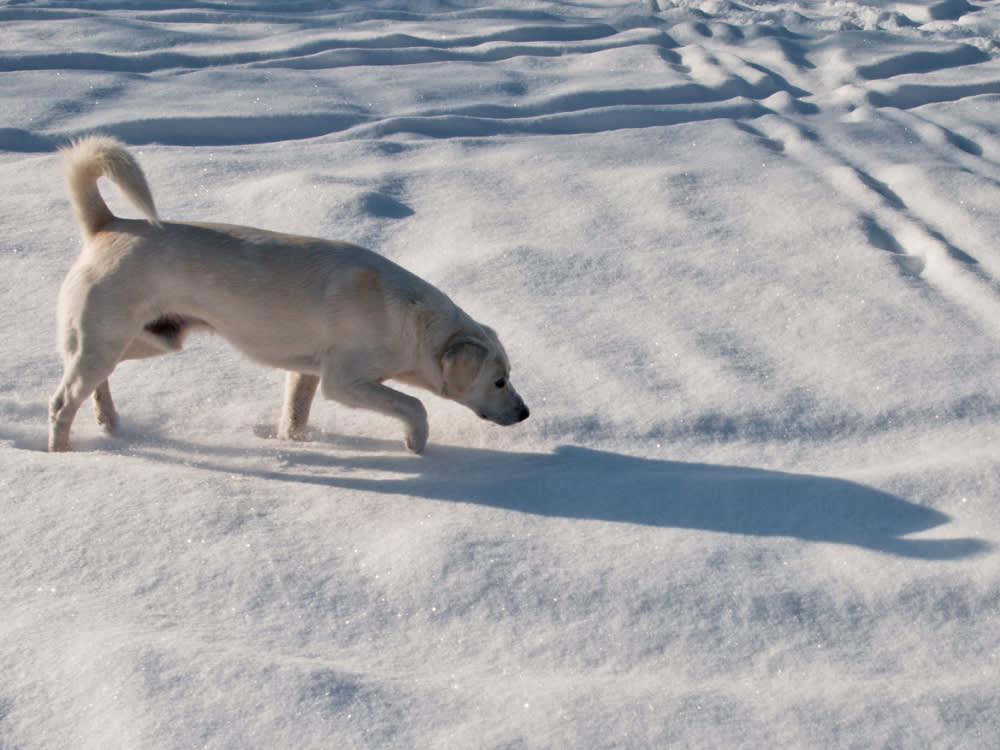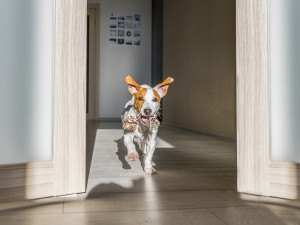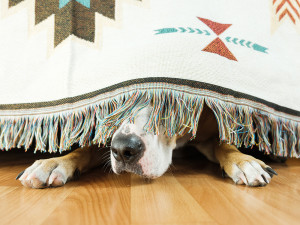“Why Is My Dog Obsessed With Chasing Shadows?”
A fascination with lights and shadows is common in high-energy dogs – but it can develop into obsessive-compulsive disorder if it gets out of hand
My 18-month-old neutered male English Shepherd developed a fascination with light and shadows about nine months ago. He chases any reflections he sees, and on cloudy days, he does the chasing behaviour in places where shadows usually appear. He will stand outside under a tree and watch shadows of leaves blowing for 20 minutes at a time. He is an inside/outside dog and gets at least an hour walk each day. The behaviour is not destructive, but I worry about the total attention he gives to it, and I don’t want it to get worse. Why does my dog chase shadows, and what should I do?
A fascination with lights and shadows is most common in high-energy, high-drive dogs, and most of the cases I’ve seen have been in herding or hunting breeds who have come from working lines. As in your dog’s case, it often shows up in adolescence. You’re right to be concerned because this problem seems to escalate if left to its own devices, and I worry that it may already be affecting your dog’s quality of life.
Get (totally free) deals for food, treats, accessories, tech and way more pet parenting must-haves.
Many dogs who start with a little chasing of shadows can degenerate into cases of full-blown obsessive-compulsive disorder. If that happens, additional compulsive behaviours may develop. Because of the potentially serious nature of this problem, it is worth having your dog evaluated by a veterinary behaviourist in your area who understands anxiety disorders. Also, a change in diet sometimes helps dramatically and is worth a try.
Prevention is a critical part of helping to extinguish the behaviour, so whenever possible, keep your dog out of situations that elicit it. Obviously, you cannot eliminate lights and shadows from your dog’s life, but even simple steps such as hanging dark curtains, spending time with your dog in the rooms with the fewest lights and shadows, and temporarily storing particularly reflective items can help.
Your response when your dog begins to chase light or fixate on shadows will have a big impact on his behaviour. Let your motto be: interrupt and redirect, but never punish. Interrupt the behaviour and try to redirect him to some other sort of behaviour. Try to distract him with a favourite toy or use a new squeaky toy to get his attention. Consider rattling his lead and heading out for a walk if that works to distracts him. (Don’t do this last one too often or he may learn to chase shadows in order to get you to take him out.)
The interruption should distract your dog, but should never scare him. Good options for redirection include tug, fetch, the ever-popular frozen Kong, a chew toy, outdoor exercise or a training session. It can be tempting to respond in a negative way to this behaviour, but any punishment carries the risk of making the behaviour worse.
An hour walk each day is enough for many dogs, but additional exercise for a young, active dog so interested in light and shadows is really important. Off-lead running for an hour or more a day (or better yet, twice a day) can really make a big difference, as can tiring activities such as fetch and swimming. I realise that finding safe places to do this is often the biggest challenge. Physical exercise can greatly help this problem, but so can additional mental exercise. Giving your dog’s mind more to do may help as much as the physical exercise. Give him enrichment toys that tax his brain, teach him tricks daily or attend classes.
If you feel that your dog’s shadow obsession is worsening or is more noticeably affecting the quality of his life (or yours), consider talking to a qualified veterinarian about medicine for obsessive-compulsive behaviour and trying complementary medical therapy such as Chinese medicine or homeopathy.








